|
This is # 5 of a 5-part blog series on how to make fantasy and science-fiction world's feel real. It's based off of a science fiction and fantasy world-building prompt session I ran at this year's Ladder Literary Conference. Blogs in this series:
About this World-Building SeriesWhen we think of a fantastic world, we often think of the broad strokes, but it’s the small details of the world that make it come to life. Those little details are what we’re going to focus on in this blog series. Tapestry of a Thousand ThreadsA solidly built world can be a launch pad for a handful, or even dozens, of stories. Terry Pratchett wrote 42 books based all based in his high-fantasy Discworld. Steven Erickson’s Malazan series spans hundreds of years of his world’s history in ten massive volumes. These worlds are so expansive because they are livable and complete. We can imagine ourselves in them. Each detail is tied to a piece of history, custom, religion, technology, or magic, and all of these elements weave together to make the tapestry of the world. Walking Through Your WorldAs Terry Pratchett said, “Why do you go away? So that you can come back. So that you can see the place you came from with new eyes and extra colors. And the people there see you differently, too. Coming back to where you started is not the same as never leaving.” As writers we create a places that we, and eventually our readers, can go to and return from. The ability to travel by just turning the pages opens up a whole world of fun and possibility. Final Prompt: Go into your world and walk around it as if you are a tourist visiting a new place. Walk down the street, go to a cyber-café, run from a monster, meet a wizard, start your quest...
3 Comments
This is # 4 of a 5-part blog series on how to make fantasy and science-fiction world's feel real. It's based off of a science fiction and fantasy world-building prompt session I ran at this year's Ladder Literary Conference. Blogs in this series: About this World-Building SeriesWhen we think of a fantastic world, we often think of the broad strokes, but it’s the small details of the world that make it come to life. Those little details are what we’re going to focus on in this blog series. Gods & Worship in Fantasy & Sci-FiFantasy and Science-Fiction writers have the luxury, or perhaps the burden, of being able to write a faith system and pantheon from the ground up. In many stories, religion is the focal point of the work, like in Arthur C. Clarke’s short story “The Star” which focuses on the faith crisis of a priest/astronaut who stumbles upon a ruined, alien civilization. In other novels, like the currently popular and maligned Song of Ice and Fire series, religion happens mostly in the background and may change depending on the character’s region and heritage. Gods may be very involved with mortals – they could even walk among the people or be called upon to physically manifest during a ritual. Deities could have their own holy days and festivals. Or, maybe there are no gods, and characters adulate nature or heroic ancestors. Perhaps the story is set on Earth in the future, and some new theology has taken over. Religion & ResearchMaking up a religion can be daunting, but it can also be one of the most fun aspects of world building. The rituals, or religions, practiced by characters can add flavor to a world and make it seem more believable. How the characters practice their spirituality can unfold throughout the narrative, or it can be a central part of the plot. With pantheon and religion building, research is critical. Look at existing religions, spiritual practices, and ancients myths for clues on how to structure faith in your world. The Prompt: Who, or what, do the people of your world worship? Write a worship session, it can be a significant religious event, a personal spiritual ritual, or something in between.
This is # 2 of a 5-part blog series on how to make fantasy and science-fiction world's feel real. It's based off of a science fiction and fantasy world-building prompt session I ran at this year's Ladder Literary Conference. Blogs in this series:
About this World-Building SeriesWhen we think of a fantastic world, we often think of the broad strokes, but it’s the small details of the world that make it come to life. Those little details are what we’re going to focus on in this blog series. Fantastic DetailsIn William Gibson’s Neuromancer, the characters are hardened, often augmented by artificial body parts, and spend half of their lives in cyberspace. They speak their jargon and refer to people and events beyond the narrative, which would not be possible without a developed world history. Consider this quote from Neuromancer, describing the forced removal of the main character’s (Case) cybernetic augmentation, which had allowed him to access cyberspace:
To an observer, Case has a scar – but now we know it’s so much more. This passage is in the first few paragraphs of the first chapter of the novel. With examination, I can tell that there was a war, Russia makes mycotoxin, they use cyberspace at a microscopic level, and cybernetic ability can be painfully extracted. These are all pieces of the world history, acted, or in this case inflicted, upon the character. But, these pieces are meaningless if not rooted in a consistent and developed narrative. Characters need orientation in their world to be able to act and react to plot points. They have access to a small sliver of the universal knowledge, to which you have unlimited access and creative power. Give characters a diversity of expertise, so their fragments of understanding come together to form the world you created. World History in the DetailsWhen I write a story, sometimes I include just the small detail, and sometimes I write the full history behind it – whatever fits in the narrative. What’s important is I know, and my characters know, the story behind these unique details. Even if I don’t use the object history right away, I might use it further in the story. As I build the web of my world, these details and their accounts can connect to make a strong structure and vibrant setting. The Prompt: Write a small, but significant physical detail from your science fiction or fantasy world.
This is # 1 of a 5-part blog series on how to make fantasy and science-fiction world's feel real. It's based off of a science fiction and fantasy world-building prompt session I ran at this year's Ladder Literary Conference. Blogs in this series: About this World-Building SeriesIf you love imaginative worlds, you know the setting is itself a character, with a history, distinct features, strengths, and weaknesses. A well-written fantastic world could be as vivid in your mind as the last new place you visited and as familiar as your backyard. When I can walk through my science-fiction or fantasy world in my mind and see it with in-depth detail, that’s when I'm ready for my characters to set foot in the places I've made for them. When we think of a fantastic world, we often think of the broad strokes, but it’s the small details of the world that make it come to life. Those little details are what we’re going to focus on in this blog series. Going to New PlacesSometimes, to write in the extraordinary, I like to ground in the ordinary. For this exercise, I want you to remember the last time that you went someplace new. Perhaps you went to another region or country, or maybe it was just the next town over or the next street over. What did you notice that was different about that place. Common cultural differences include languages, religion, accents, food, architecture, and customs. There’s also variance in the landscape, climate, flora, and fauna. Building a New WorldWhy do want you to write about the last place you visited? Because the little, and sometimes big, details you notice when you are in a new place are the same elements you should feature in the description of your fictional world.
The more fantastic your world, the more fanciful you can be, but you be, you should have ordinary details as well. These details ground the reader and give them a common reference point. Maybe there’s a science fiction world where everyone walks on floating sidewalks, but they also all eat boring cabbages because it’s easiest to grow in the depleted soil underneath. The Prompt: Write out some of the sensory details from the last new place you visited. |
Alison Lyke
Categories
All
Archives
November 2022
|

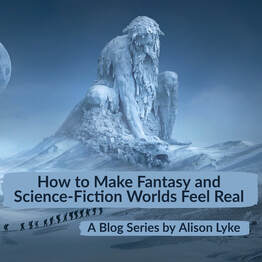
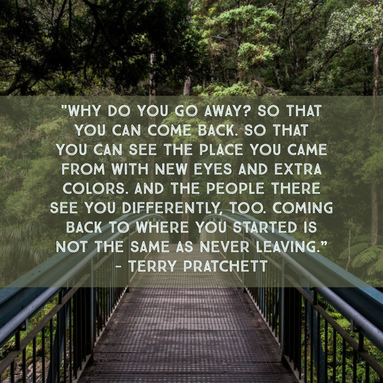
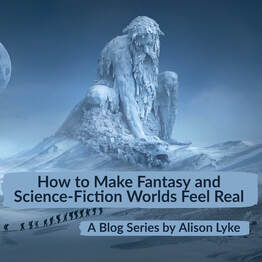


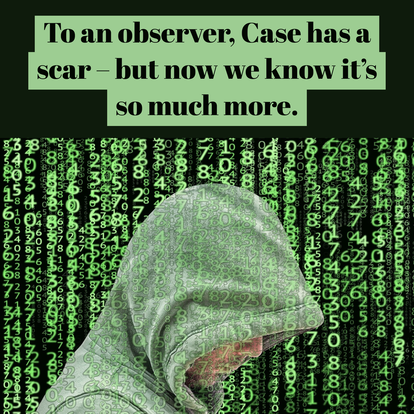
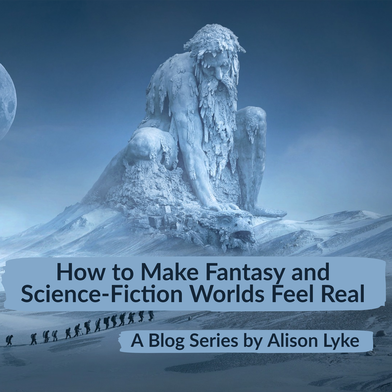

 RSS Feed
RSS Feed
